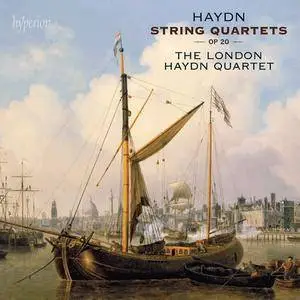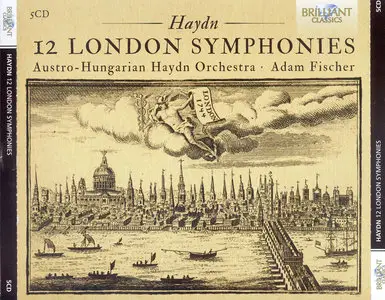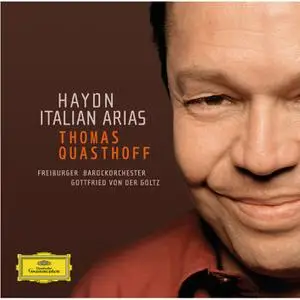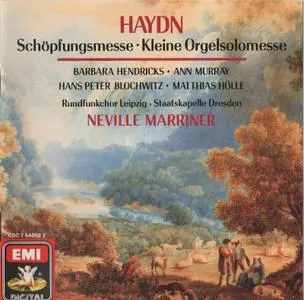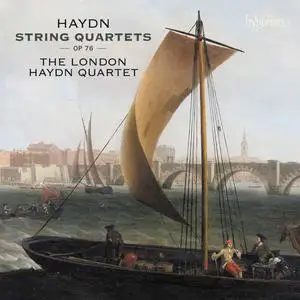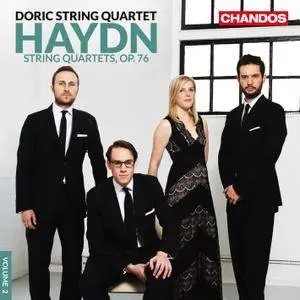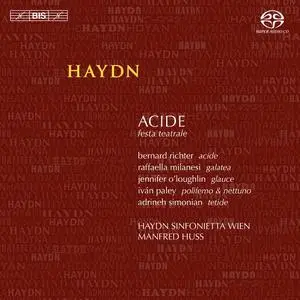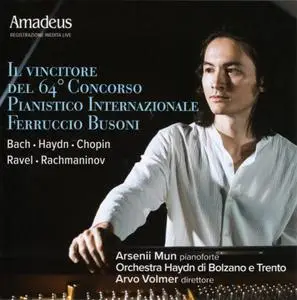Haydn
The London Haydn Quartet - Joseph Haydn: String Quartets, Op. 20 (2011) Music
Posted by tirexiss at Jan. 26, 2023
The London Haydn Quartet - Joseph Haydn: String Quartets, Op. 20 (2011)
EAC | FLAC (image+.cue, log) | Cover + Digital Booklet | 160:18 | 759 MB
Genre: Classical | Label: Hyperion | Catalog: CDA67877
EAC | FLAC (image+.cue, log) | Cover + Digital Booklet | 160:18 | 759 MB
Genre: Classical | Label: Hyperion | Catalog: CDA67877
One can never own enough recordings or hear enough performances of the Haydn string quartets. Not only did Haydn invent the quartet form, he was composing, even early in his career, at a level that no one else could even come close to matching, according to Classical Era authority, Charles Rosen. These Opus 20 'Sun Quartets' (so-called because of the drawing of a sun on the title-page of the original published edition) were among the eighteen early quartets Haydn wrote around 1770 in which he made a huge advance on what had previously been a form more like a divertimento; in so doing he more or less invented 'high classicism'.
Austro-Hungarian Haydn Orchestra, Adam Fischer - Franz Joseph Haydn: 12 London Symphonies (2013) 5CD Box Set Music
Posted by Designol at July 19, 2024
Franz Joseph Haydn: 12 London Symphonies (2013) 5CD Box Set
Austro-Hungarian Haydn Orchestra, conducted by Adám Fischer
EAC | FLAC | Image (Cue&Log) ~ 1.17 Gb | Scans included
Genre: Classical | Label: Brilliant Classics | # 94601 | Time: 05:16:47
Austro-Hungarian Haydn Orchestra, conducted by Adám Fischer
EAC | FLAC | Image (Cue&Log) ~ 1.17 Gb | Scans included
Genre: Classical | Label: Brilliant Classics | # 94601 | Time: 05:16:47
Joseph Haydn, often referred to as 'The Father of the Symphony', has an enormous 109 of these works to his name. Within his vast oeuvre of symphonies is a group of 12, written between 1781 and 1795, which are known as the 'London' symphonies, composed during or for his two visits to the English capital. Brimming with inspiration and character, the 'London' symphonies contain many of the legendary moments of Haydn's works, including the drumroll opening of No.103, the ticking of the clock in the Andante of No.101, the jubilant sound of the triangle in the finale of the 'Military', and that arresting interjection of the timpani in the 'Surprise'. This collection brings together these wonderful works, each of which contributed to Haydn's crafting of the symphonic form that would later be taken up by none other than his pupil and friend, Wolfgang Amadeus Mozart. The Austro-Hungarian Haydn Orchestra was formed by Adam Fischer in 1987 with the express purpose of performing the works of the revered composer.
Thomas Quasthoff - Haydn: Italian Arias (2008) Music
Posted by tirexiss at Nov. 11, 2021
Thomas Quasthoff - Haydn: Italian Arias (2008)
WEB | FLAC (tracks) - 306 MB | 01:02:32
Genre: Classical | Label: Deutsche Grammophon
WEB | FLAC (tracks) - 306 MB | 01:02:32
Genre: Classical | Label: Deutsche Grammophon
Thomas Quasthoff’s great artistry needs no introduction. Here he follows up his much-raised Bach Cantatas recording with another project perfectly suited to his dark-hued, flexible voice. In anticipation of the forthcoming Haydn year – the 200th anniversary of the composer’s death falls in May 2009 – Quasthoff turns his attention to the Viennese master’s considerable operatic output, with an album of arias drawn from both Haydn’s comic and serious operas.
Neville Marriner - Haydn: Schöpfungsmesse; Kleine Orgelsolomesse (1990) Music
Posted by tirexiss at March 29, 2021
Neville Marriner - Haydn: Schöpfungsmesse; Kleine Orgelsolomesse (1990)
EAC | FLAC (image+.cue, log) | Covers Included | 59:04 | 298 MB
Genre: Classical | Label: EMI | Catalog: 54002
EAC | FLAC (image+.cue, log) | Covers Included | 59:04 | 298 MB
Genre: Classical | Label: EMI | Catalog: 54002
In a conducting career spanning several decades, Sir Neville Marriner has had many great achievements, especially with his own Academy of St. Martin In The Fields, and as music director of the Los Angeles Chamber Orchestra from 1969 to 1978. Another great achievement was the series of recordings he made during the middle and late 1980s with the Dresden State Orchestra for EMI of the later Mass settings of Franz Joseph Haydn, recordings that, alongside similar ones made by Leonard Bernstein, both with the New York Philharmonic in the 1970s and the Bavarian Radio Symphony Orchestra in the 1980s, bought this particular aspect of Haydn's output back into the forefront after having been somewhat obscured by his one hundred four symphonies.
The London Haydn Quartet - Joseph Haydn: String Quartets, Op.76 (2021) Music
Posted by ArlegZ at Dec. 25, 2021
The London Haydn Quartet - Joseph Haydn: String Quartets, Op.76 (2021)
EAC | FLAC | Image (Cue & Log) ~ 740 Mb | Total time: 153:29 | Scans included
Classical | Label: Hyperion | # CDA68335 | Recorded: 2020
EAC | FLAC | Image (Cue & Log) ~ 740 Mb | Total time: 153:29 | Scans included
Classical | Label: Hyperion | # CDA68335 | Recorded: 2020
The summit of Haydn’s quartet-writing, and of the classical string quartet medium itself. The ‘Emperor’, ‘Fifths’ and ‘Sunrise’ may be the best known of the six—as so often with those works by Haydn which have nicknames—but the others are every bit their equal.
Doric String Quartet - Franz Joseph Haydn: String Quartets, Op.76 (2016) 2CDs Music
Posted by Designol at Sept. 18, 2023
Doric String Quartet - Franz Joseph Haydn: String Quartets, Op.76 (2016) 2CDs
EAC | FLAC | Image (Cue&Log) ~ 640 Mb | Mp3 (CBR320) ~ 340 Mb | Artwork included
Genre: Classical | Label: Chandos | # CHAN 10886 | Time: 02:26:59
EAC | FLAC | Image (Cue&Log) ~ 640 Mb | Mp3 (CBR320) ~ 340 Mb | Artwork included
Genre: Classical | Label: Chandos | # CHAN 10886 | Time: 02:26:59
This is the second volume in the Doric String Quartet’s series devoted to Haydn’s String Quartets. Op. 76 turned out to be the last full set of six string quartets that Haydn was to compose. While they were written over the period 1796-97, they were not published until 1799. They had been commissioned by Count Joseph Erdödy, and such arrangements often entailed, as in this case, a period of time during which the works were reserved for that person’s exclusive use and enjoyment. The composition of Op. 76 coincided with Haydn’s work on Die Schöpfung and the first few of the six masses which Haydn wrote for the name day of Princess Maria Hermenegild Esterházy, and one can readily imagine that such compositional preoccupations rubbed off onto the composition of the quartets. However, that cannot be equated with a particular predominant ‘opus character’, a feature of some of Haydn’s previous sets. Rather – like Op. 20, also recently recorded by the Doric String Quartet (CHAN10831(2)) – the quartets seem to be most remarkable for their sheer variety.
Manfred Huss, Haydn Sinfonietta Wien - Joseph Haydn: Acide - Festa teatrale (2010) Music
Posted by ArlegZ at Aug. 13, 2022
Manfred Huss, Haydn Sinfonietta Wien - Joseph Haydn: Acide - Festa teatrale (2010)
EAC | FLAC | Tracks (Cue & Log) ~ 326 Mb | Total time: 63:57 | Scans included
Classical | Label: BIS | # BIS-SACD-1815 | Recorded: 2009
EAC | FLAC | Tracks (Cue & Log) ~ 326 Mb | Total time: 63:57 | Scans included
Classical | Label: BIS | # BIS-SACD-1815 | Recorded: 2009
We often think of Haydn as a composer of symphonies, string quartets and piano sonatas – that is, of instrumental music in various forms. But in fact, he probably wrote as much vocal music, in a variety of genres. The late, great oratorios are still justly famous – The Creation and The Seasons – but he also composed twelve large-scale Masses, a number of cantatas and other sacred works, as well as songs, concert arias and as many as 21 operas and Singspiele. Some of these have been lost, but the majority still exist in more or less complete form. The earliest of these is Acide, the fragment of an opera composed for the celebrations of the wedding of Count Anton Esterházy and Countess Maria Theresia Erdödy, and performed at the Esterházy residence at Eisenstadt on 11th January 1763.
Arsenii Mun, Orchestra Haydn di Bolzano e Trento & Arvo Volmer - Arsenii Mun: Live Recital (2023) Music
Posted by delpotro at Jan. 10, 2024
Arsenii Mun, Orchestra Haydn di Bolzano e Trento & Arvo Volmer - Arsenii Mun: Live Recital (2023)
XLD Rip | FLAC (tracks+log+.cue) - 303 Mb | MP3 CBR 320 kbps - 171 Mb | 01:13:47
Classical | Label: Amadeus
XLD Rip | FLAC (tracks+log+.cue) - 303 Mb | MP3 CBR 320 kbps - 171 Mb | 01:13:47
Classical | Label: Amadeus
The attached CD is dedicated to the latest winner of the 64th “Busoni” Prize, awarded “unanimously” after 28 years, the 24-year-old Russian pianist Arsenii Mun. On the album, the testimony of the extraordinary feat that took the pianist from the preliminaries to the final with the Haydn Orchestra of Trento and Bolzano conducted by Arvo Volmer: Bach: Choralvorspiel Nun komm der Heiden Heiland BWV 659; Haydn: Sonata in E flat major Hob. XVI: 52; Chopin: Three Mazurkas op. 6 no. 1, op. 17 no. 2 and no. 4; Ravel: Gaspard de la nuit; Rachmaninov: Rhapsody on a Theme by Paganini op. 43 for piano and orchestra.
Nikolaus Harnoncourt, Concentus Musicus Wien, Cecilia Bartoli sings Mozart & Haydn (2003) Music
Posted by Vilboa at Oct. 11, 2019
Nikolaus Harnoncourt, Concentus Musicus Wien, Cecilia Bartoli sings Mozart & Haydn (2003)
NTSC 16:9 (720x480) VBR | Italiano (LinearPCM, 2 ch) | (DTS, 5 ch) | (Dolby AC3, 6 ch) | 4.67 Gb+7.23 Gb (2xDVD9) | 196 min
Classical | OPUS ARTE | Sub: English
NTSC 16:9 (720x480) VBR | Italiano (LinearPCM, 2 ch) | (DTS, 5 ch) | (Dolby AC3, 6 ch) | 4.67 Gb+7.23 Gb (2xDVD9) | 196 min
Classical | OPUS ARTE | Sub: English
One of the greatest artists of her generation, Cecilia Bartoli is at the height of her powers. With thrilling performances of Mozart and Haydn arias, recorded live in concert, this double disc set also includes symphonic performances from Nikolaus Harnoncourt and his Concentus Musicus Wien.
Helmuth Rilling - Haydn: Missa Sancti Francisci, Requiem (1995) Music
Posted by tirexiss at March 28, 2021
Helmuth Rilling - Haydn: Missa Sancti Francisci, Requiem (1995)
EAC | FLAC (image+.cue, log) | Covers Included | 01:13:31 | 369 MB
Genre: Classical | Label: Hungaroton | Catalog: HCD31022
EAC | FLAC (image+.cue, log) | Covers Included | 01:13:31 | 369 MB
Genre: Classical | Label: Hungaroton | Catalog: HCD31022
This CD contains a fine performance of the Michael Haydn's Requiem, but if you are interested in hearing the much discussed striking influence of this Requiem on Mozart's, this is not most persuasive performance. For Rilling gives a rather musically suave reading, emphasizing a certain comforting quality to the music, and though you can still make the comparison, there is a better take on that angle. The old Hinreiner recording which was on a Koch/Schwann lp (I don't think it ever made it to CD) is actually much better for suggesting the almost spooky and dusky similarity between the two works. Still, this one is very heartfelt and enjoyable. But the much more spectacular event on this CD is the St. Francis Mass of Michael Haydn.
